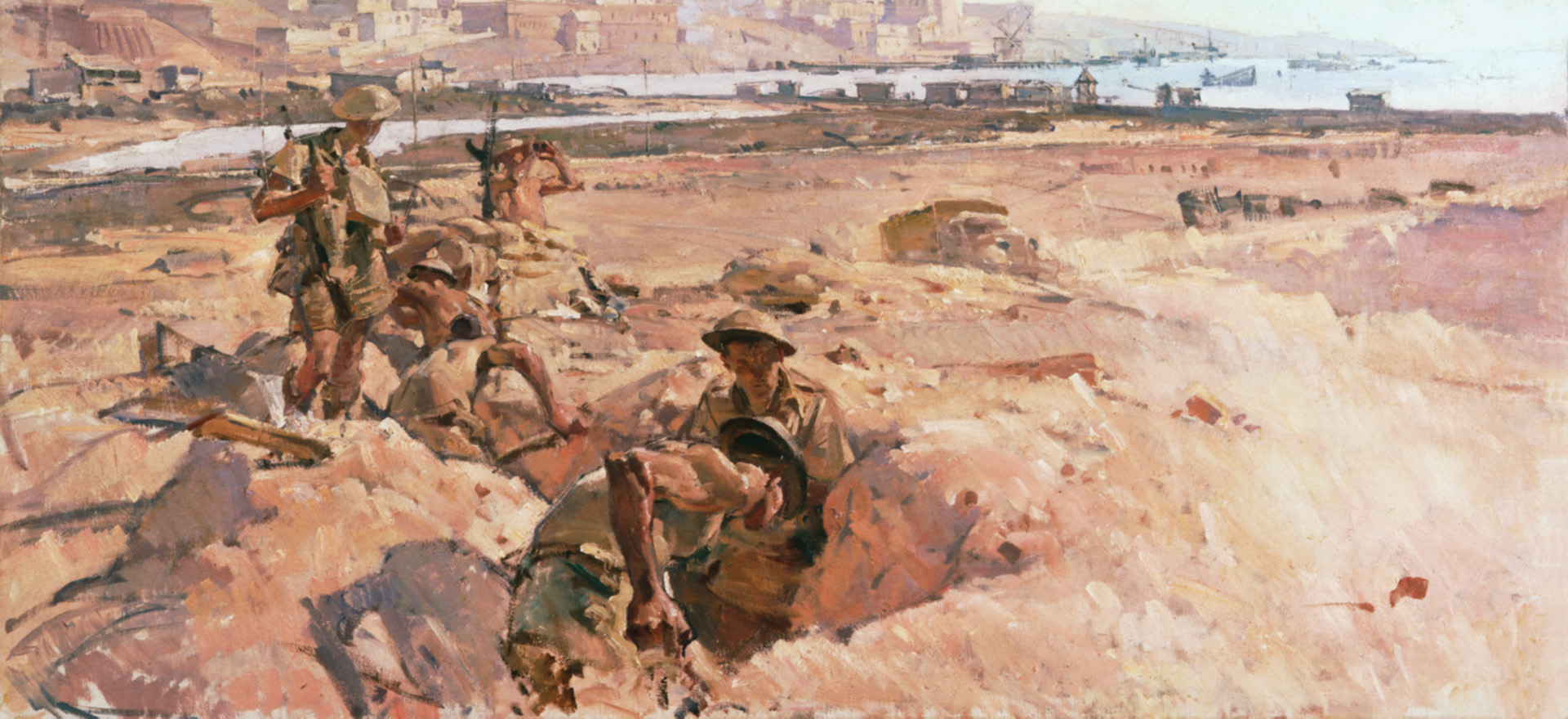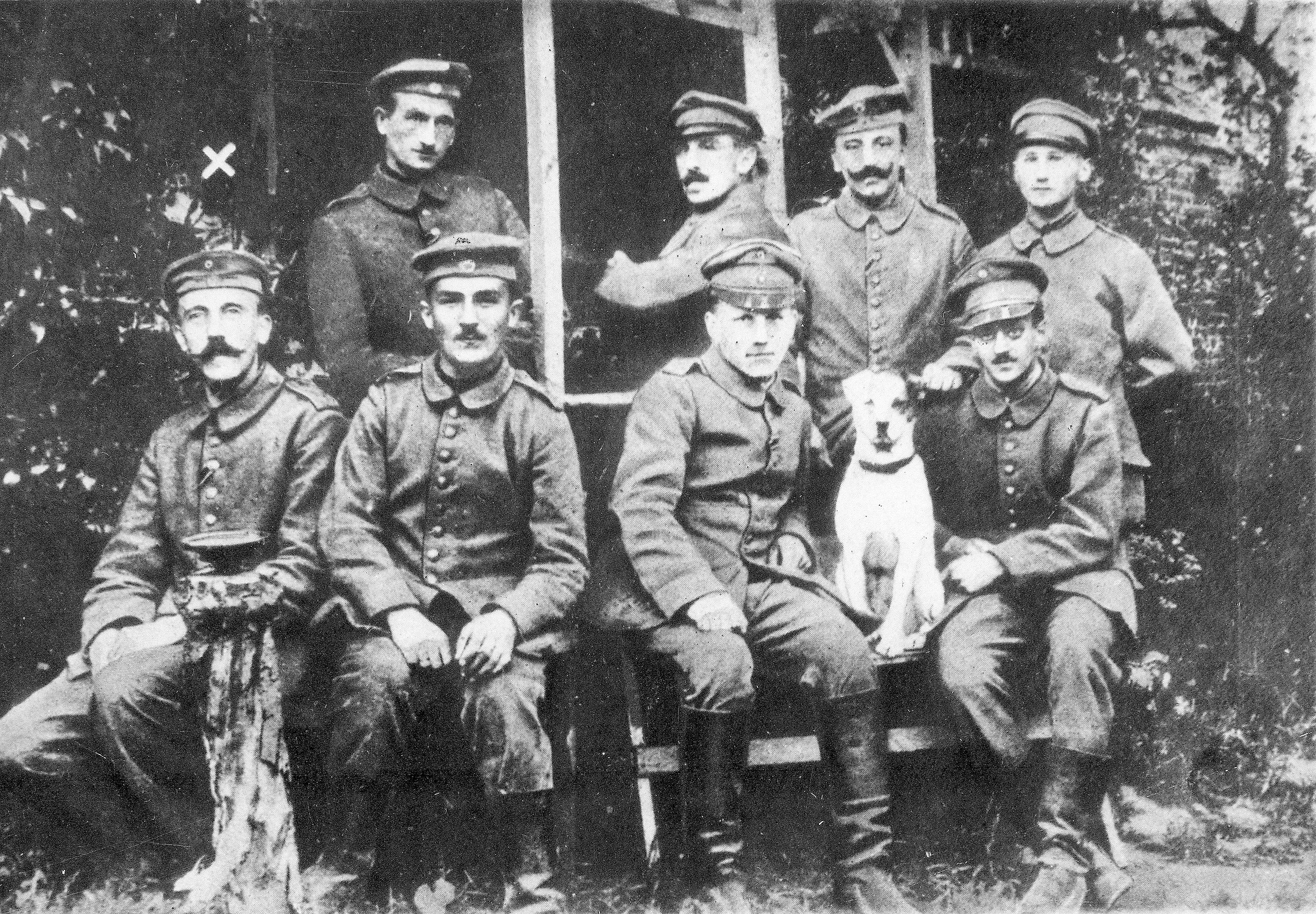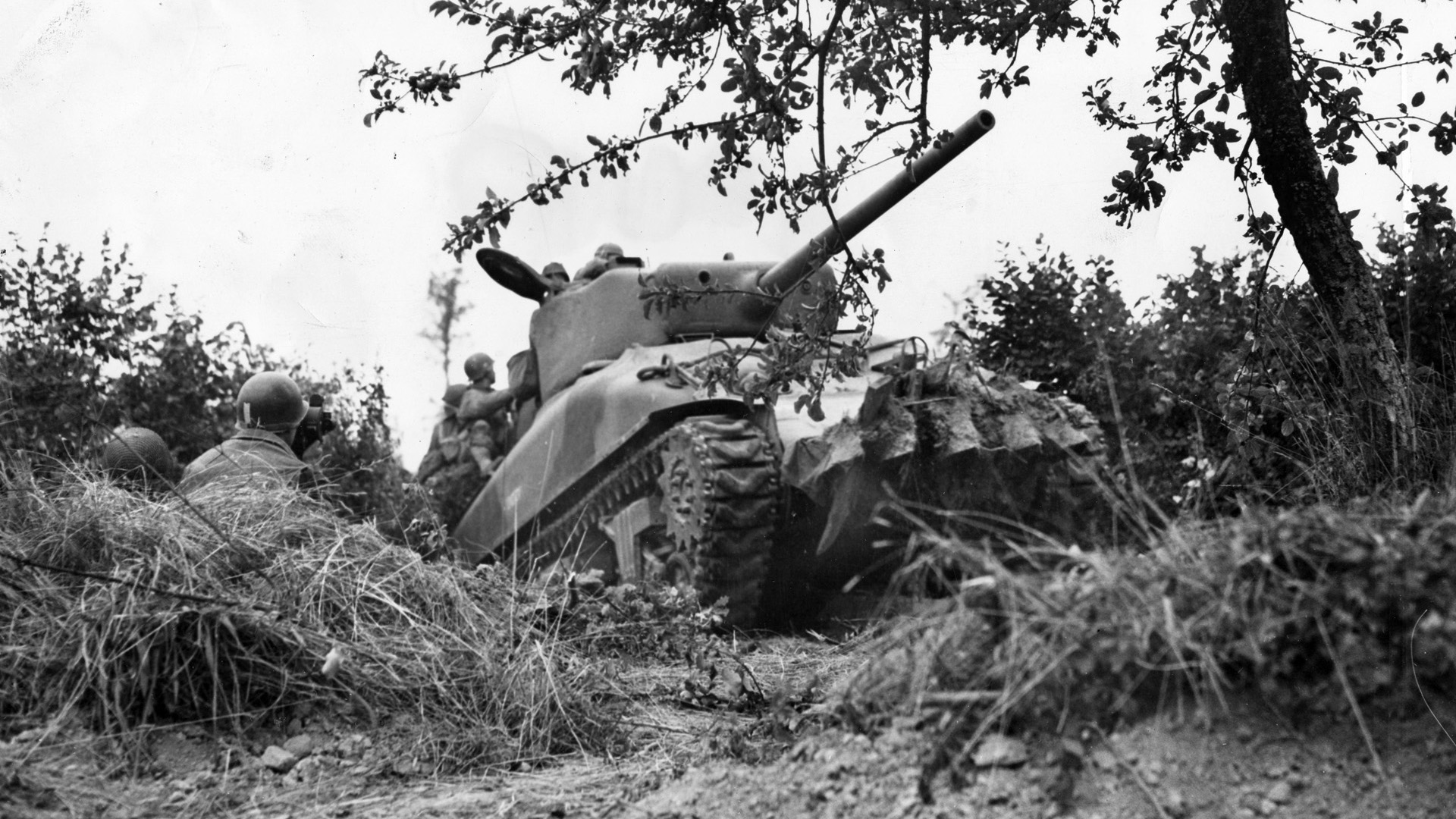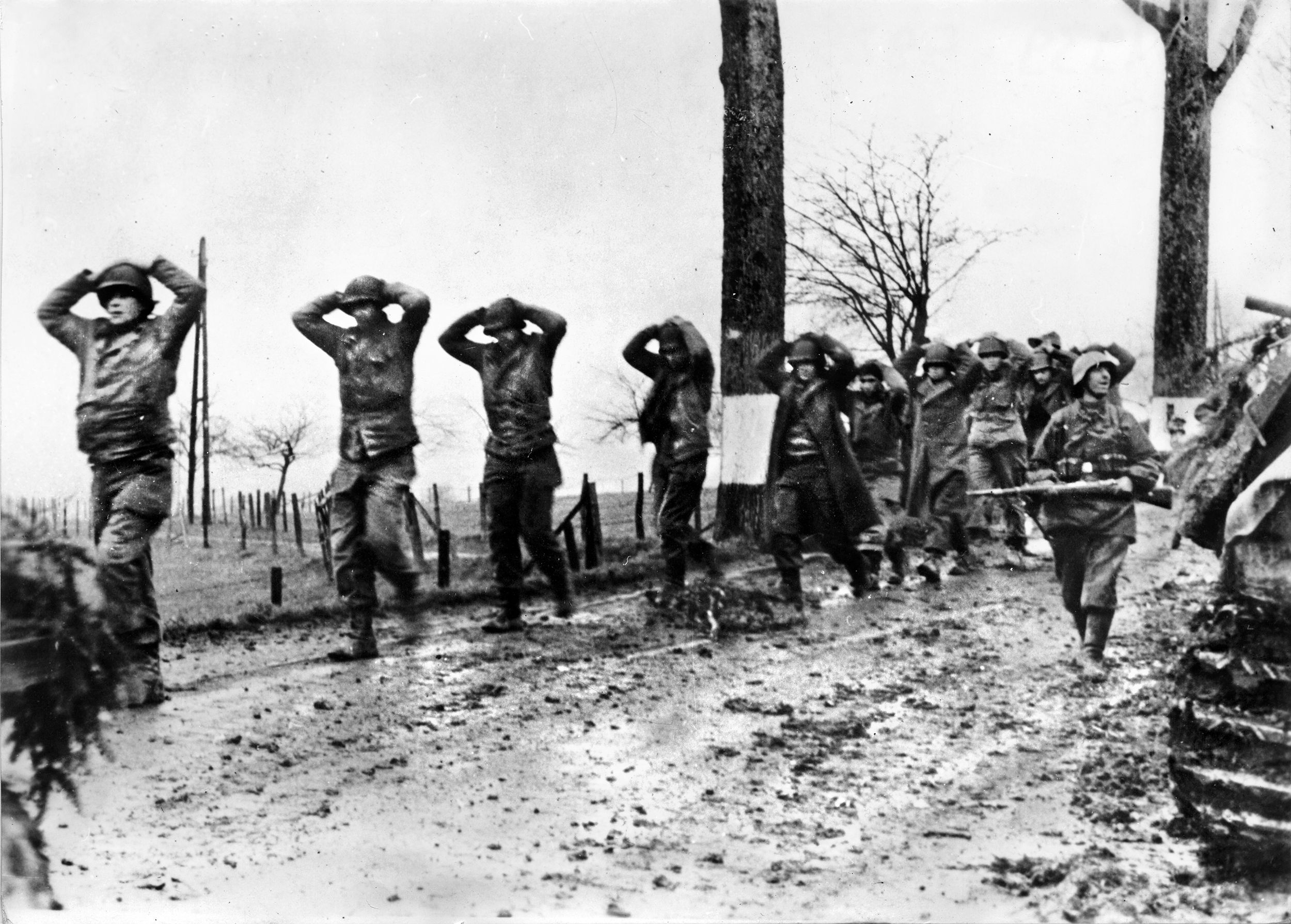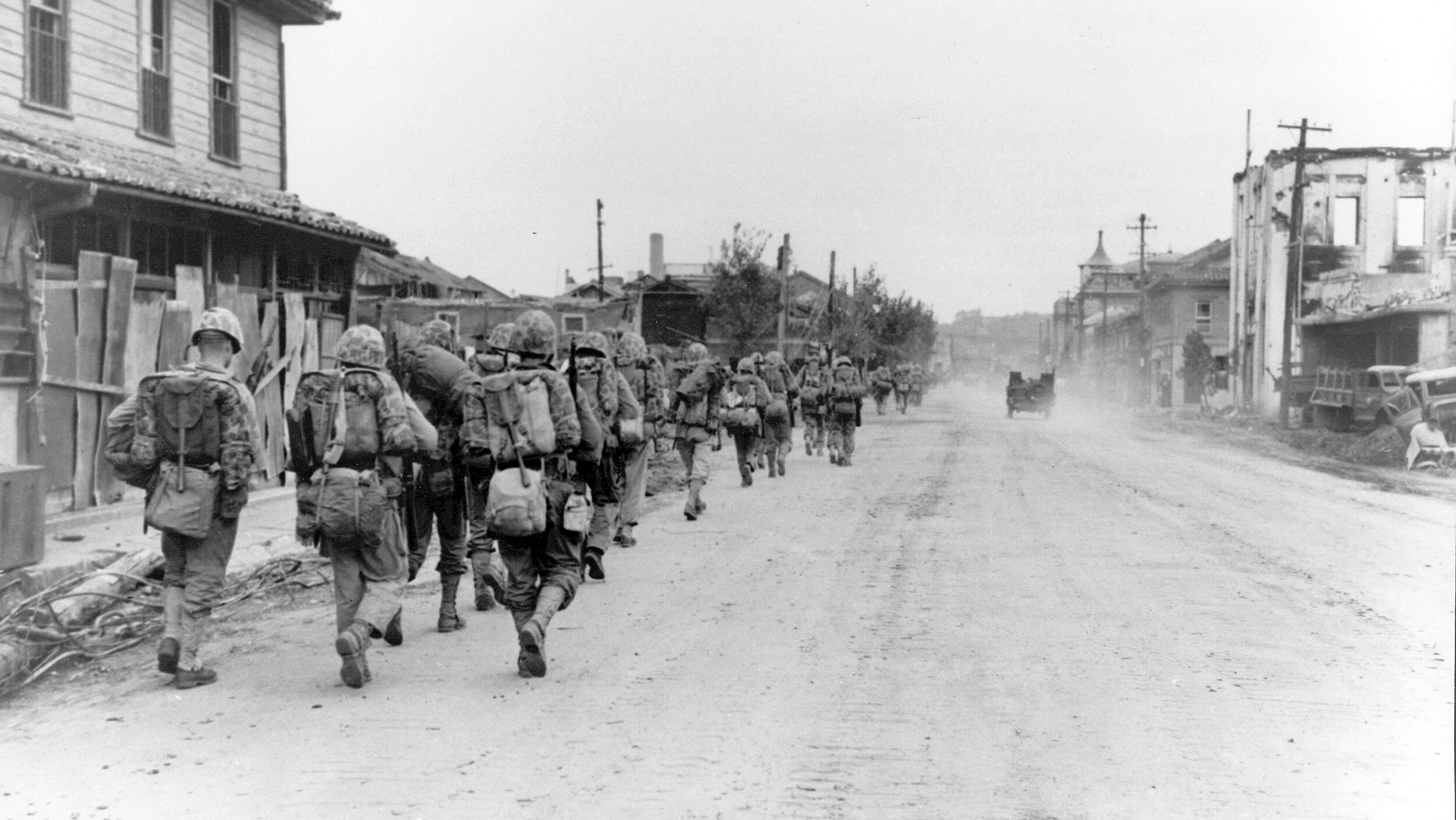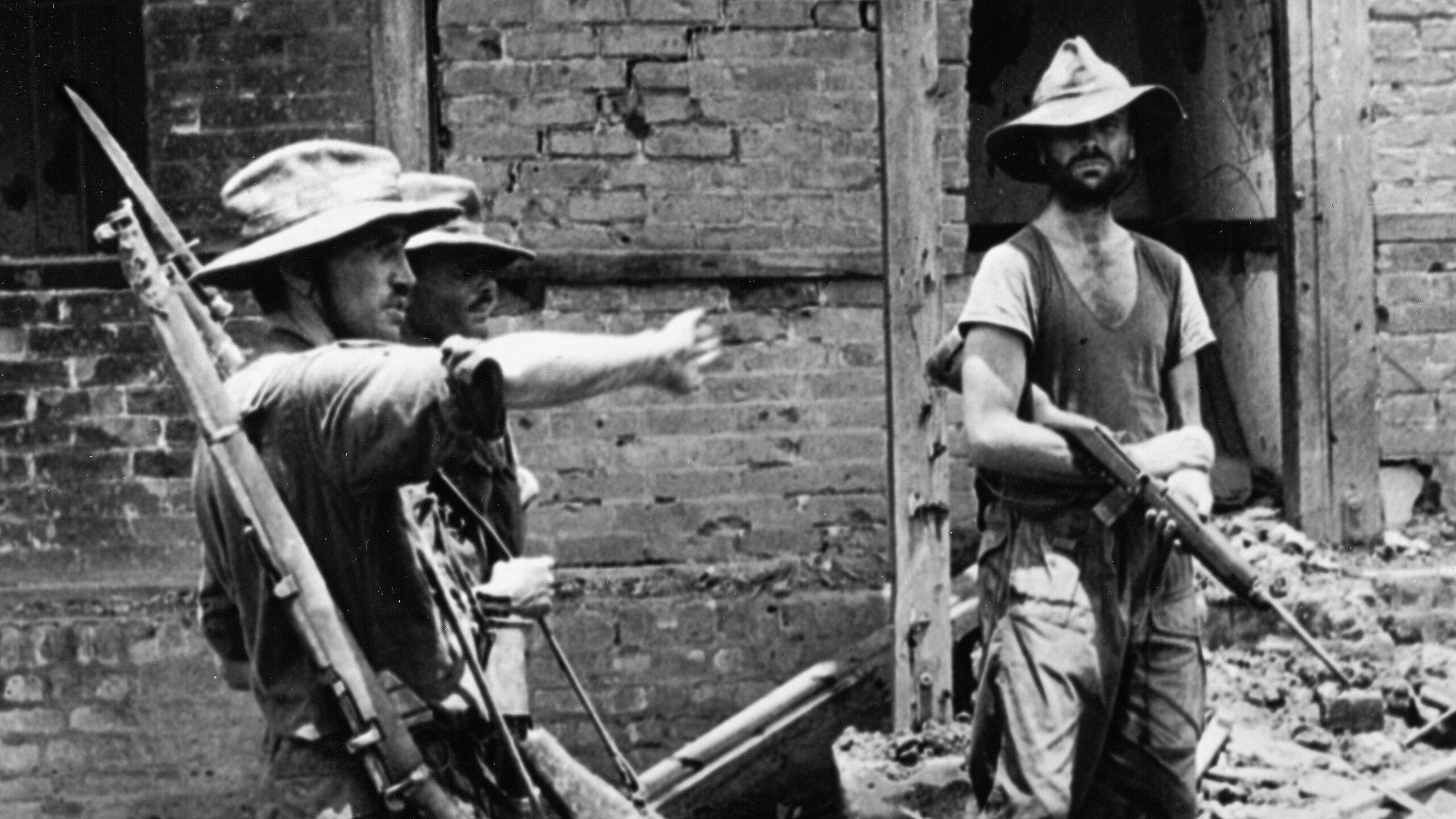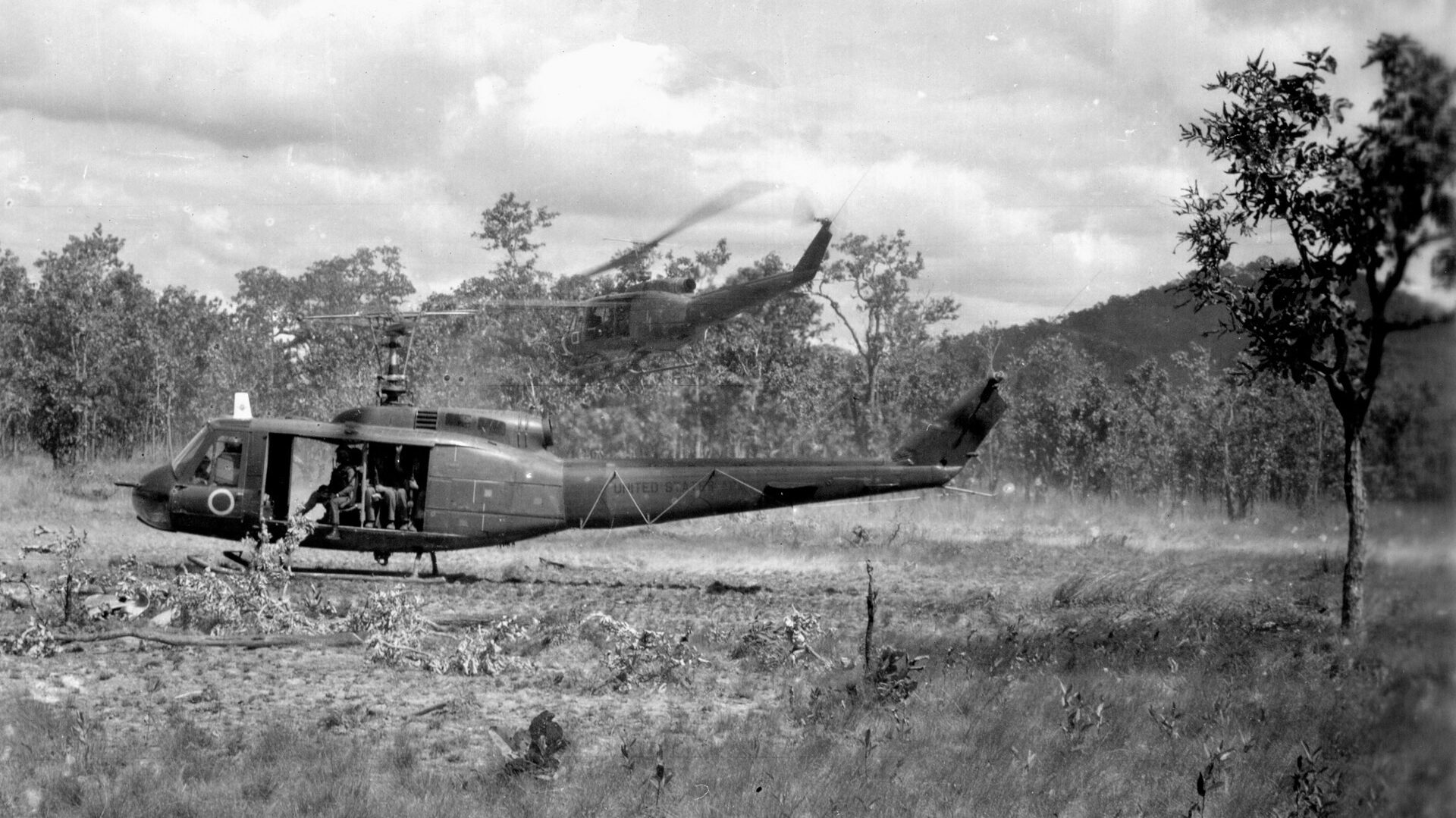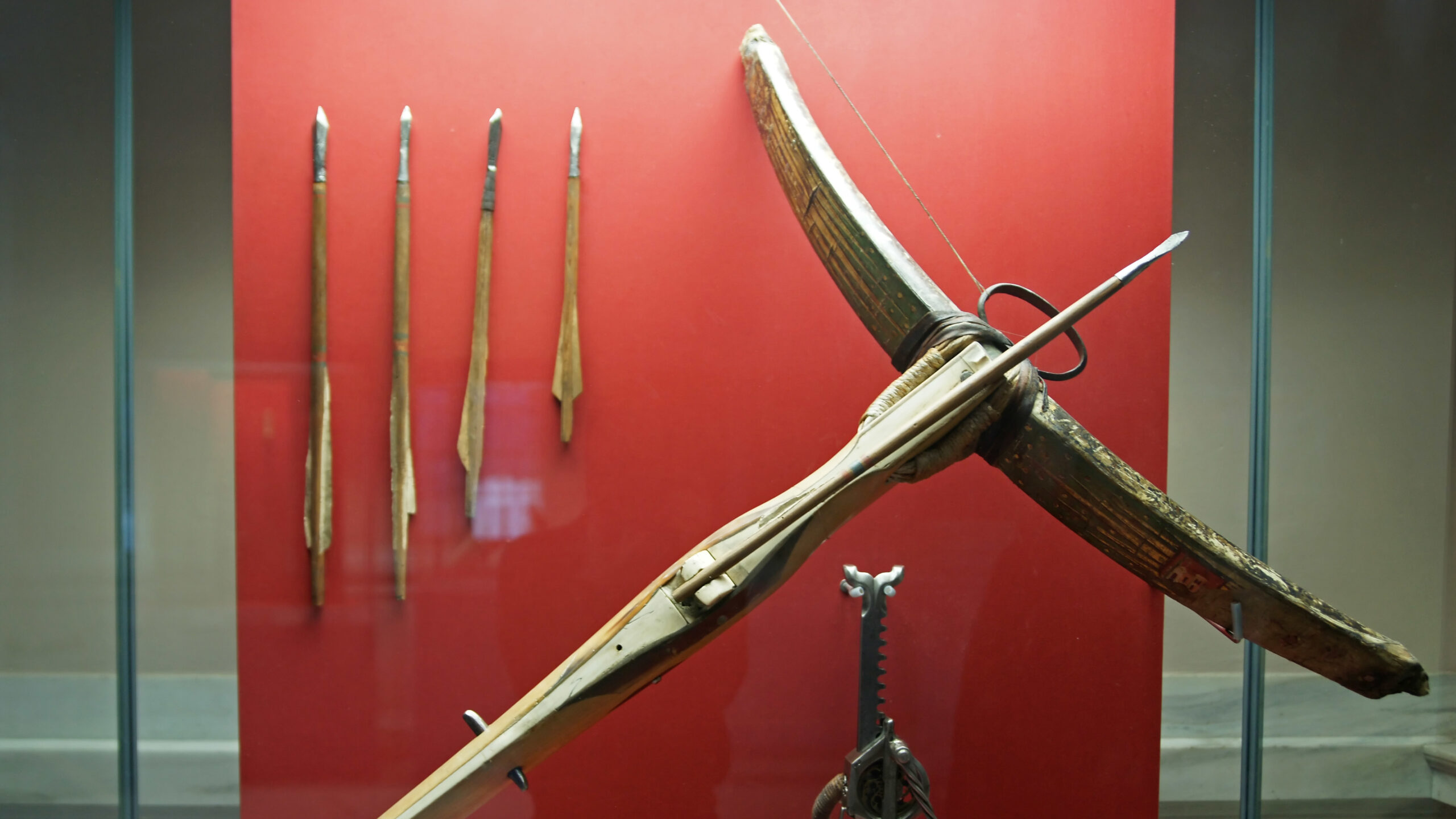By Christopher Miskimon
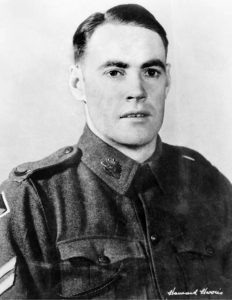
John Hurst Edmondson, known to his friends as Jack, died April 14, 1941, lying on the concrete floor of a sand-swept fighting outpost in the perimeter around Tobruk, Libya. Blood poured from bullet wounds in his neck and stomach. Hours earlier, he and his lieutenant led his section of five men against a much larger force, killing and wounding many and driving the rest away. Jack’s bravery and steadfast refusal to abandon his mates resulted in an award of the Victoria Cross, tragically as a posthumous decoration.
Born at Wagga Wagga in New South Wales on October 8, 1914, Jack Edmondson grew up on a rural farm near Liverpool, now a suburb of Sydney. Along with a love of animals, young Jack also enjoyed shooting and gained a reputation as an excellent rifle shot, earning an Australian National Rifle Association’s medal at the age of 17. Significantly, he had no desire to harm living things and wouldn’t use his rifle to shoot animals around the farm.
In 1939, Jack joined the militia and served in the 4th Battalion on coastal-defense duties north of Sydney. In May 1940 he volunteered for the 2nd Australian Imperial Force (AIF), the name given to Australia’s volunteer army, which was eligible for overseas service. (The 1st AIF was the volunteer army raised for World War I. When World War II started, a second army of volunteers was raised; hence the numbering.) At the time, Australian militia units could not be compelled to serve outside Australian territory. Many young men felt the call to aid the British Commonwealth overseas, and the AIF was the path to do so.
Upon transfer to the AIF, Jack was assigned to the 2/17th Infantry Battalion, the number “2” designating that the unit was raised as part of the 2nd AIF. The unit trained at Ingleburn Camp in New South Wales until September 1940, when it embarked for Palestine. The battalion was one of three that made up the 20th Brigade, initially part of the 7th Division but soon transferred to the Australian 9th Division.
The Australian 9th did not take part in Operation Compass, the British counterattack against the Italian invasion of Egypt. That operation ejected the Italians from Egypt and allowed the small British force to advance deep into Libya, decisively defeating the Italian army in North Africa. The operation was perhaps too successful, however, as it spurred Nazi Germany to send the Afrika Korps to Libya under the command of one their most aggressive commanders, General Erwin Rommel.
Rommel wasted no time preparing a counter-offensive against the British and Commonwealth troops. This came at a bad time for the Allies, as many of their most-experienced troops were withdrawn from North Africa at the time to serve in Greece, denuding the British command of their veterans just when a German-Italian army prepared to attack. The Australian 9th Division transferred to Eastern Libya, known as Cyrenaica, to replace the withdrawn veterans in early March 1941. Much of the division’s artillery and cavalry stayed behind in Palestine, and there were shortages of other heavy weapons and equipment.
Within days Rommel and his German-Italian combined force attacked eastward into Cyrenaica just after Jack’s unit reached Marsa Brega on the Mediterranean coast. The Australians fell back toward Tobruk, a fortified coastal town captured months earlier from the Italians. The town had a small but functional port, making it useful for bringing supplies forward. This made it a prize equally valuable for both the Axis and Allies.
When the Australians arrived on April 9, 1941, they combined forces with a number of British units along with an Indian cavalry regiment and bolstered the incomplete defenses begun by the Italians. Australian Major General John Lavarack assumed command and received orders to hold the town. The Battle of Tobruk quickly evolved into one of the most famous sieges in history, lasting months and becoming an important morale booster to citizens of the Commonwealth.
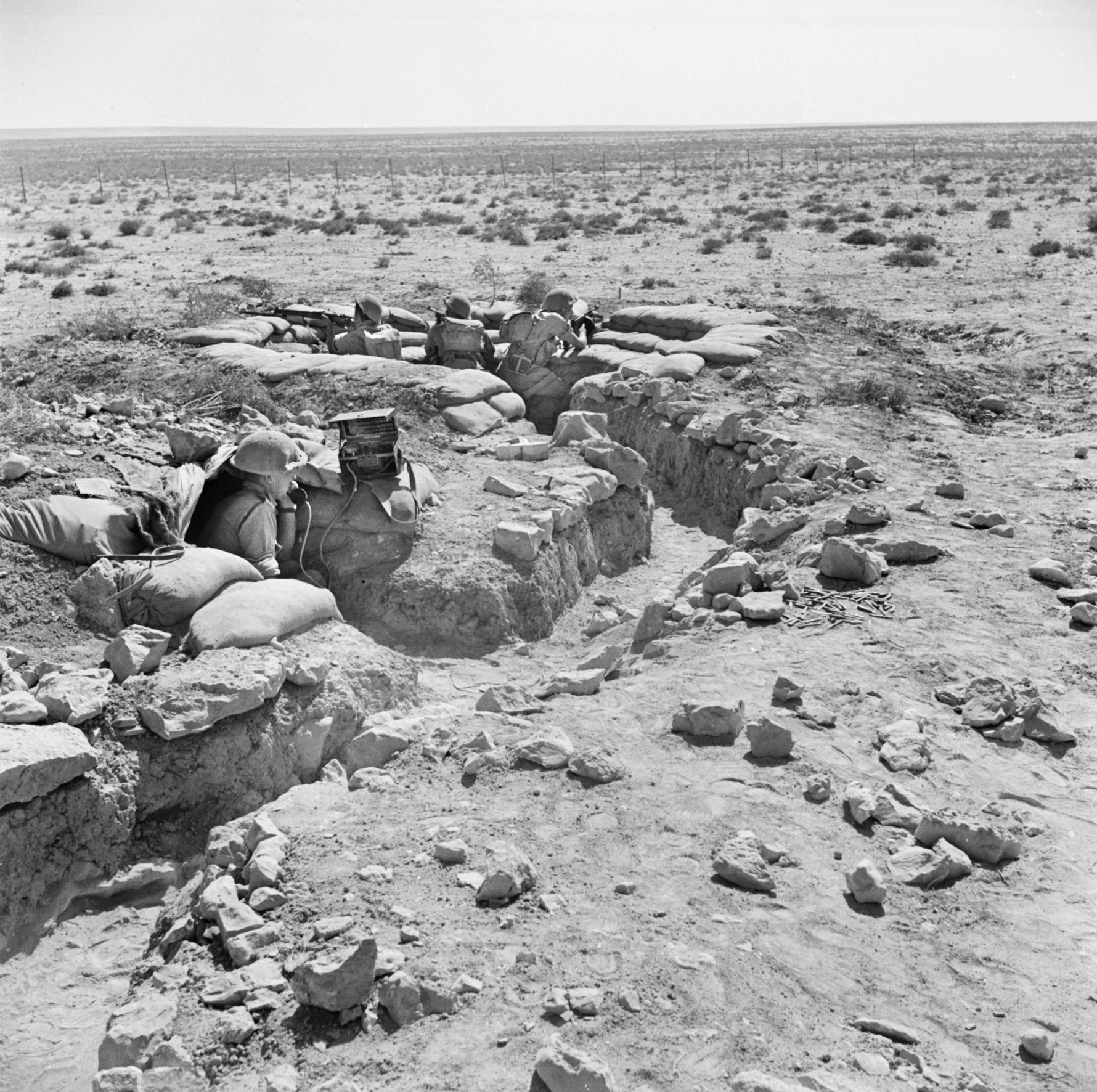
Tobruk’s defenses included a perimeter that combined barbed wire and an antitank ditch averaging nine miles from the town. These defenses were incomplete, and in a few places the ditch was covered by boards with sand strewn over them to provide camouflage. Mines were laid in some places. Outposts overlooked the perimeter: an outer line with strongpoints 750 yards apart, with a second line 500 yards behind. The system was designated the Red Line, with reserve units manning another set of strongpoints three miles closer to Tobruk. Each strongpoint contained positions for two machine guns and one antitank gun. The bunkers were made of concrete and connected by trenches.
The infantry manning these strongpoints were told to allow enemy tanks to pass and then fire on their accompanying infantry, stripping the enemy armor of support. A mobile reserve of tanks, artillery, and antitank guns would deal with the panzers.
This was the situation Jack Edmondson and his unit faced when they arrived at Tobruk. As a corporal, Jack led Number 3 Section, 16 Platoon, D Company, 2/17th. The unit received orders to man outpost R33, on the southern side of the outer perimeter. This placed them at the forefront of any attack on their portion of the line. Due to the shortage of antitank guns, R33 didn’t have one, though it had a few captured Italian machine guns to bolster the Bren light machine guns the Australians deployed.
When Rommel’s forces reached Tobruk, he ordered immediate attacks, hoping to maintain the momentum of his offensive and take Tobruk before an effective defense could be solidified. The first attack on April 10 failed, as did the second attack on April 13, but only after hard fighting.
Despite this setback, Rommel was determined to capture Tobruk quickly to facilitate his eastward advance. Another attack was ordered, and its advanced elements were to go in that night.
A small force of 30-40 Germans was tasked with infiltrating the perimeter and clearing out Outpost R33 to allow follow-on forces to pierce the Australian defenses and rampage through to Tobruk. This German group was heavily armed with machine guns, mortars and a pair of infantry field guns. These small cannon were light enough for a few soldiers to drag through the gap in the barbed wire but packed the punch needed to obliterate Outpost R33.
The infiltration began soon after dusk. A few yards inside the wire, they set up their heavy weapons and opened fire at about 11:00 pm Rifle and machine-gun fire lashed at R33 while mortar bombs and cannon shells crashed around it. The Australian defenders could see the tracers from the enemy machine guns striking the concrete of the outpost. Jack’s section crouched in one of the communications trenches, the outpost to their right.
Some of the Australians in the outpost returned fire, but it wasn’t enough to suppress the Germans, who kept pounding away with their mortars and cannon while their machine guns sent burst after burst just inches over the heads of 16 Platoon, squatting low in the trenches. The platoon commander, Lieutenant Franklin Austin Mackell, appeared out of the darkness and told Jack to bring his section back into the outpost. Mackell, a 23-year-old from Merrylands, New South Wales, wasted no time issuing Jack new orders, cool-headed but shouting to be heard over the din of gunfire. Edmondson’s Number 3 Section would act as a fighting patrol, and the men in the outpost would lay down covering fire to cover the patrol’s movement while it flanked the German position and drove the enemy back.
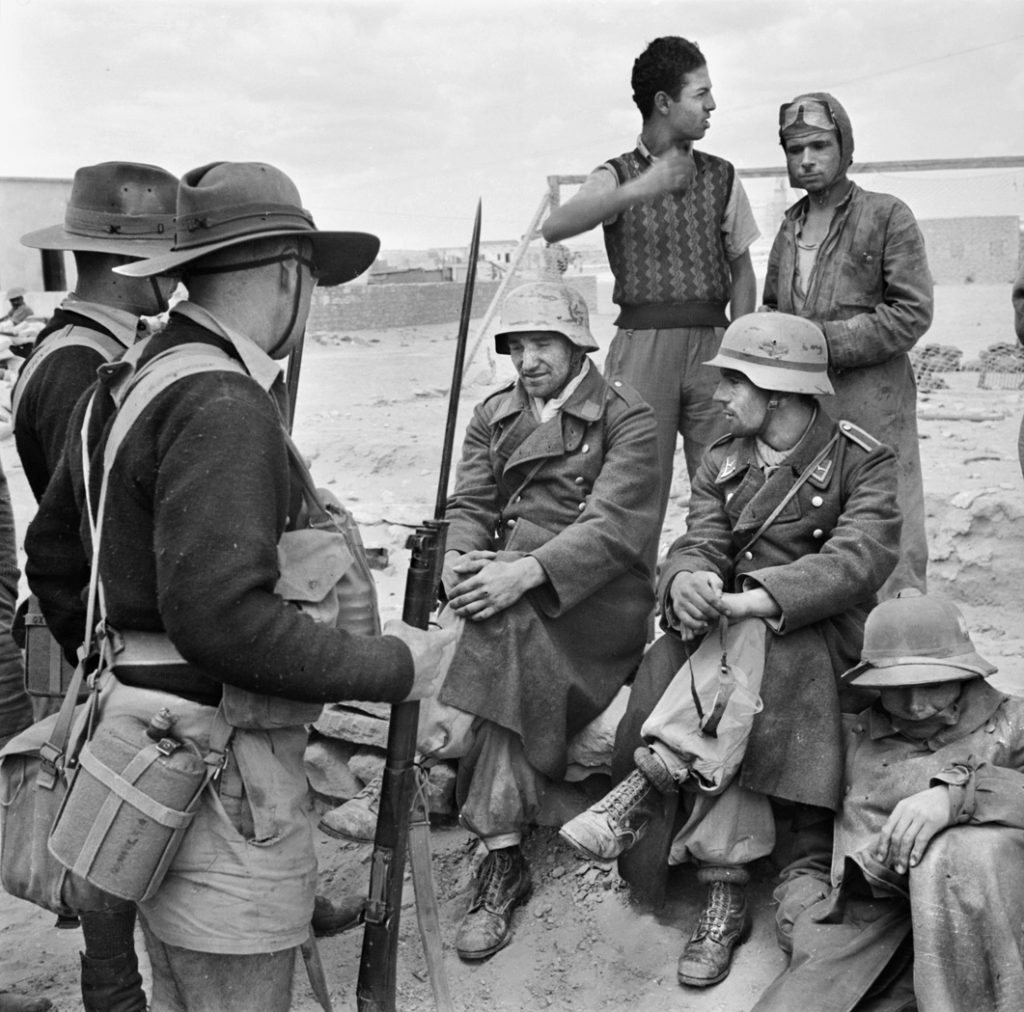
The lieutenant wasn’t sure how many Germans were out there, but thought there had to be at least a dozen, the minimum needed to man the weapons being fired at the outpost. Despite the odds of being badly outnumbered, Mackell chose to use just Edmondson’s section—six men including Jack. If he had sent more, it would have left the outpost undermanned.
The section included Ron Keogh, Ted Smith, “Splinter” Williams, Ron Grant, and “Snowy” Foster. Lieutenant Mackell was coming with them, as well. Though they couldn’t know it at the time, the ensuing struggle would pit seven men against at least 30.
Mackell outlined the plan. The soldiers in the outpost would open fire at 11:40, shooting and shouting to attract German attention. At 11:45 they would cease fire, and the section would move around the German right flank and rush them in a line. Bayonets were to be fixed, and each man was to bring a grenade. When they reached grenade-throwing range, Mackell would order them to drop to the ground and throw. After the grenades exploded, they would go in firing from the hip and using the bayonet to kill or drive off the remaining enemy.
Jack’s section gathered quickly at the left wall of the outpost and then Mackell ordered them forward and took the lead. The entire section followed, Edmondson behind Mackell and a little to the right. Tracer bullets spat from the muzzles of the German machine guns just about 200 yards distant, lighting up the night. There was also the occasional flash from one of the guns or mortars.
The section managed to make it most of the way to their target before the enemy noticed them. The veteran German troops may have been expecting a flanking movement; they would have done the same. One of their machine guns pivoted and started firing at 3 Section as the Australians were about 100 yards away. The section kept moving, bent over, forging steadily ahead over the stony desert surface. The Australians dropped to the ground about 50 yards from the Germans and tried to catch their breath. The Australian outpost was scheduled to cease firing in another minute.
Despite the incoming machine-gun fire, the section made another dash forward, trying to get within grenade range before the men in the outpost stopped firing. As they closed the range to 30 yards, Jack was hit in both the stomach and neck, letting out a gasp of shock at the impacts. Despite the wounds he continued forward another few strides, then the entire section dropped to the ground again.
Jack and his men lay flat in the sand, dark figures among the desert rocks. Suddenly, all the shooting and shouting from the outpost stopped. The night was far from silent, however, as the German machine guns continued to chatter at the new threat. Mackell shouted, “Right, boys!” and the section rose and hurled their grenades toward the enemy position. Within a few seconds the grenades detonated, sending sand and rocks roiling into the air along with deadly shards of jagged shrapnel. The enemy fire stopped completely. As the grenades went off the Australians charged the Germans, yelling and firing their bolt action Lee-Enfield rifles from the hip.
It took only a few seconds before Mackell, Edmondson, and 3 Section were on top of their enemy. There seemed to be at least 30 or 40 of them. The grenades had done their work; a few Germans lay wounded on the ground, and none of them were able to return to their machine guns after taking cover to avoid the blasts. A number of the Germans ran off into the night, back toward their lines. Now the fight became hand-to-hand. Ted Smith plunged his bayonet into a German who had just emptied a pistol at him. Edmondson did his own work with the bayonet, stabbing two Germans within seconds. Several Germans were clearly surprised by the Australian onslaught. One of them repeatedly screamed, “Wife! Children!” while another shouted “Peace! Peace! S’il vous plait!” combining French and English.
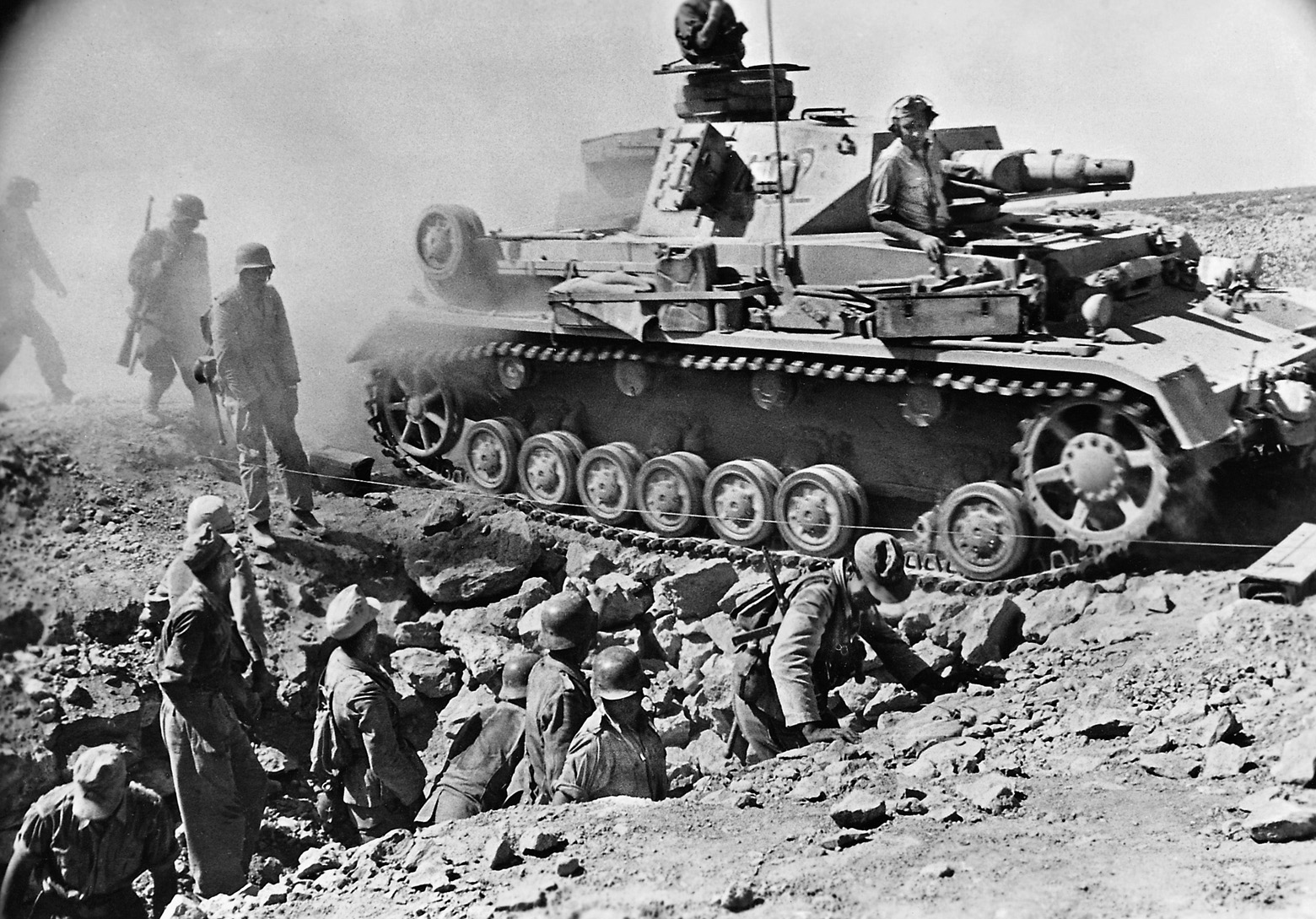
While Jack and his men fought the remaining Germans, Lieutenant Mackell engaged in a desperate struggle of his own. Facing off against two Germans, he smashed the stock of his rifle over the head of one and stabbed the other with his bayonet. The bayonet became stuck in the German’s body, and Mackell fought to extract it as another German lunged at him, grabbing him around the legs. The lieutenant saw Edmondson nearby and called out to him, desperate for help. Just as Jack started toward him, a second German jumped onto Mackell’s back, wrapped his arm around the Australian officer’s head, and jerked it backwards.
Despite his wounds, Jack rushed to the aid of his platoon commander. He thrust his bayonet into the German on Mackell’s back, and the man fell to the ground. Next, Jack turned his rifle to the German clutching the lieutenant’s legs and stabbed that man as well. The German stiffened, then went limp and relaxed his grip. Mackell got free, but his bayonet snapped as he yanked it out of the German’s body. He continued to use the rifle as club.
There was no more shooting now, and only a few Germans were left; the rest were dead, wounded, or running back toward their lines through the hole they had made in the wire earlier. Edmondson reportedly saw a German trying to reload a pistol and lunged at him with his bayonet, but he passed out while doing so. With the fight over, Mackell and the rest of 3 Section quickly returned to the outpost, carrying the wounded Edmondson with them. They also brought back one prisoner and a captured machine gun. Smith thought they killed about a dozen Germans, and at least 20 had run off at the beginning of the fight.
When Jack regained consciousness, he was in the outpost, lying on the concrete. He had four wounds in his stomach and neck, all received before the grenades were thrown. The echoes of machine-gun and rifle fire reverberated off the walls of the tiny fortress; the battle had started again.
A medic arrived and bandaged Jack’s wounds, but the blood loss was severe. Two soldiers, Bill Taylor and Athol “Tarzan” Dalziel, put him on a stretcher and attempted to carry him to the aid station at battalion headquarters. They didn’t get far, as the battle for Tobruk raged around them and heavy enemy fire quickly drove them back to the cover of the outpost. Trapped by the maelstrom around them, 16 Platoon had to stay in place, wait out the battle, as their friend Jack slowly died.
He lay awake through the night. Lieutenant Mackell stopped to talk to him for a few minutes. At 6:30 on the morning of April 14, Jack called for Athol and gave him a message for his parents, “Tarz, give my love to the folks and good luck, old boy.” Athol promised to deliver his words. Jack grew steadily weaker and lost consciousness at about 6:45 am. He never woke again and died at 7:00 am.
As Jack’s life ebbed away over those few hours, the First Battle of Tobruk seethed around Outpost R33. The German actions of the prior few days were mostly probing and testing of the perimeter after the first push. This was a set engagement, designed to puncture the perimeter and defeat the garrison. By dawn on the 14th, the Germans had the equivalent of a battalion each of tanks and infantry inside the perimeter.
The D Company commander, Captain J.W. Balfe, reported that after 16 Platoon’s successful attack, the enemy did little until about 2:15 am, when hundreds of Germans advanced through the gap near R33. German engineers worked on the ditch so their tanks could cross, and the first panzers came through at about 5:20 am. Over a dozen came right past Balfe’s headquarters outpost, and the Australians let them pass only to open up on the groups of 15-20 infantrymen following each tank. The gunfire drove them to cover while the tanks continued.
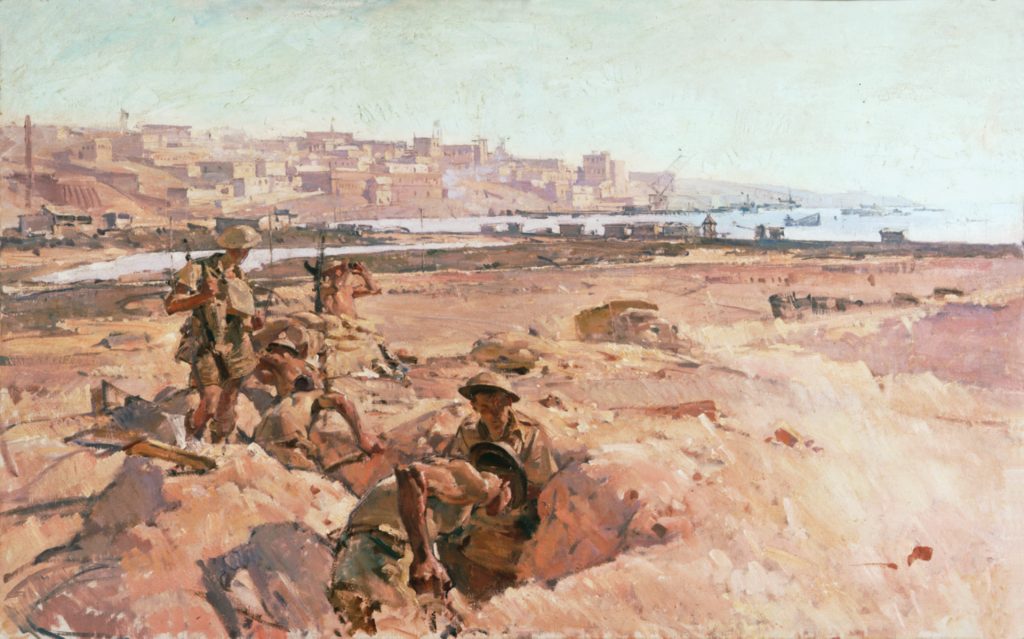
Minutes later, another 30 panzers came through, but they also continued on and left their infantry behind. The Australians called in artillery to keep the German infantry pinned. Three German antitank guns also appeared, and Balfe let them get within 50 yards of the outpost before opening fire. Other outposts did the same as more of the German guns appeared. The enemy crews were all killed or wounded, many before they could get off a single shot.
Behind the outposts, the German tanks rumbled toward the town. These panzers, now unsupported by infantry, ran through a gauntlet of artillery, British tanks, and antitank guns. Within minutes, 17 of them lay knocked out on the battlefield. The rest turned back, and at 7:15 Balfe saw them retiring toward the gap in the perimeter in headlong retreat. The Australian infantry added their fire to the fray, cutting down more of the enemy troops as they fled with the panzers, several of which were burning.
The battle was over, though D Company spent several hours mopping up pockets of Germans who hadn’t escaped with their armor. Balfe observed the Germans’ surprise that the outposts hadn’t surrendered once the tanks were in. “That day we learned the value of holding on no matter what happens,” he stated.
“Dear Mrs. Edmondson,
What can I say that will in the slightest degree convey my sympathy for you in your great loss? I fear that there is absolutely nothing that describes any feeling on the matter. Unfortunately, I have not had, as yet, the honour of meeting you, but I intend to come and see you when all this ghastly business is over. Although I had only known Jack since last December, I think I can quite rightly claim the distinction of calling myself his best friend. My loss, and speaking for his section, ours, is colossal, but of course, we realize that it is not to be compared to yours.
Jack died a hero Mrs. Edmondson, acclaimed by everyone. When he was hit he was performing a deed of great valour, and after he was hit he saved his officer’s life. Words cannot be found to express our praise and gratitude.
I have all Jack’s personal things, his watch, pen, diary, collar badges, letter and colour patches, which I will send on to you at the earliest opportunity.
He was cheerful to the last and his last words to me were, “Tarz, give my love to the folks and good luck, old boy.” Fortunately he died very quietly and painlessly.
I must close now as we are about to move back into the lines, — for revenge. I shall write a longer letter to you at some future date.
Once again let me give you my heartfelt sympathy.
I am yours very sincerely, Athol L. Dalziel”
The letter above is just one of many his parents received from Jack’s fellow soldiers in 2/17th Infantry Battalion, Australian Imperial Force, written just two days after Jack’s death.
It was a great victory, securing Tobruk and proving the German blitzkrieg was not unbeatable. The Australians had put up a stiff defense, holding their positions even after the Germans had penetrated their perimeter. Jack Edmondson played his part in that achievement, though tragically at the cost of his life. His remains were carried back to Tobruk and buried in the military cemetery there. His actions so impressed the members of his battalion that the battalion commander, Lt. Col. John Crawford, submitted his name for a valor award to the General Sir Archibald Wavell, General Officer Commanding, Middle East.
Wavell’s office suggested that Jack’s deeds warranted a posthumous award of the Victoria Cross, the highest award for valor in the Commonwealth, which was approved in July 1941.
Finally, on Saturday, September 27, 1941, an investiture was held at the Admiralty House in Sydney, Australia. The Governor-General, Alexander Hore-Ruthven, titled Lord Gowrie, presented the Victoria Cross to Mr. and Mrs. Edmondson in a private ceremony. As this was the first Victoria Cross awarded to an Australian during World War II, it received widespread newspaper coverage throughout the country.
To honor the fallen soldier, a memorial was established at his former high school along with a public clock in his hometown of Liverpool. A portion of Liverpool is now known as Edmondson Park. In 1960, Mrs. Edmondson donated Jack’s medals, including his Victoria Cross, to the Australian War Memorial in Canberra. They can be seen next to his portrait by artist Joshua Smith.
Author Christopher Miskimon is a regular contributor to WWII History. He writes the regular books column and is an officer in the Colorado National Guard’s 157th Regiment.
